Doom: The Dark Ages is a prequel to the 2016 reboot of Doom, and it follows the adventures of the infamous Doom Slayer before he got shoved in a coffin and woke up on Mars. The Dark Ages opens with the Slayer enslaved by the Kahn, a group of angelic beings who are part of a war against the forces of hell. Caught between heaven and hell are the Sentinels, a group of techno-fantasy medieval warriors. Enslaved or not, the Slayer is out to kill as many demons as possible and aid the Sentinels in taking down the evil Prince Ahzrak, one of the high lords of the hellish armies.
The Dark Ages' plot is an albatross around the game's neck. The plot is uninteresting, cliched and overly lengthy, and it captures none of what makes Doom fun and exciting. There are fun moments when the Doom Slayer is allowed to be an unstoppable force, but far too much time is spent on characters who have no personality traits and babble meaninglessly about the paper-thin plot. It is not only boring on its own, but it also lessens the impact of the hinted backstory in Doom 2016 and Doom Eternal. Normally, I'd say that a weak plot isn't that serious, but the game dedicates enough time to the plot that it drags down everything. There are more cut scenes in The Dark Ages than in perhaps the entire rest of the franchise up to this point, and it just doesn't work.
Thankfully, while the story is weak, the gameplay of The Dark Ages follows in the footsteps of Eternal, more than I would've initially thought. It maintains the same basic arcade-style atmosphere, with an emphasis on glowing power-ups, resource management, heavily video-gamey mechanics, and fast-paced action. You can't air-dash and are slightly slower, but you're still going to be jumping, platforming, and zooming around the battlefield. In general, the core gameplay felt very similar to Eternal in a lot of ways.
The biggest new feature in The Dark Ages is the shield. If Eternal was about mobility, The Dark Ages is about defense and parrying. You get the shield extremely early in the game, and it functions very much as expected. You can block attacks with it, but repeated attacks will temporarily break it. The shield also serves as a replacement for the meathook, so you can instantly charge an enemy — or different environmental objects — with only a short cooldown. You can also throw the shield, which destroys enemy armor and temporarily stuns an enemy.
The most important feature is your ability to parry. While most enemy attacks can only be blocked, every enemy in the game has Hell Surge attacks, which glow green and can be parried by raising your shield just before they hit. This emits a shockwave that can damage enemies and their armor and reflect ranged attacks at their attacker. Later in the game, you unlock special runes that cause a parry to perform a special attack, such as shooting magical daggers or temporarily activating an automatic turret gun. Parrying also temporarily stuns enemies, so you'll have a chance to counterattack; this is essential on higher difficulties, where aggressive enemies can and will kill you quickly.
The parry mechanic is a lot of fun, but it's also going to be the thing that makes or breaks the game for players. It is not optional. Almost everything in the game is built around parrying frequently, so it overshadows most of the other gameplay mechanics. It's very easy to imagine someone who was a fan of Doom 2016 or Eternal turning off the game because they don't enjoy the reliance on parrying. To the game's credit, the parrying is extremely forgiving, and you can customize the parry window to make it easier. At the easiest setting, you can basically hit the block button when the attack is remotely near you, and you'll instantly parry.
Of course, there's still plenty of gunplay in The Dark Ages. The weapon system has been slightly simplified, so rather than getting new mods for weapons, you have a set of weapon slots, and each slot can have one of two weapons that you can swap between. For example, the first slot is your shell-using weapons, such as the combat shotgun and super shotgun. Likewise, there's a rocket launcher and grenade launcher, which share the same slot, as well as a machine gun and a spear-shooting Impaler.
Generally, each weapon has a distinct purpose, and you tend to choose between speed and power or single target versus multi-target. For example, there are two guns that use skulls for ammunition. One, the Pulverizer, spews the bone shards over a huge area, so it's great for clearing out crowds. Its counterpart weapon, The Ravager, has a much narrower cone of damage, so it's better for focused fire. Each weapon can also be upgraded by using gold and gems found throughout missions. Some weapons only have a single upgrade path, while others let you select between two mutually exclusive upgrades that you can swap, such as the rocket launcher having improved splash damage or enhanced damage if used immediately after a parry.
For the most part, the weapons are fun and quite formidable. My favorite was the chainshot, a weapon that shoots a giant metal ball that can be charged up for more damage and automatically gains charge if used after a parry. The least fun is the replacement for the BFG, the BFC, which is functionally a reskinned BFG. I almost never used it because the rest of the arsenal was so fun.
One of the core things The Dark Ages does is streamline the mechanics of Eternal by combining various things. Like Eternal, it functions on a system of managing cooldowns to keep various resources topped off, so you get limited health, armor and ammo but multiple ways to regenerate it. In The Dark Ages, they give you less powerful but more versatile tools.
You replenish ammo by performing melee attacks, which function similarly to the Blood Punch from Eternal, where you build up charges and spend the charges to initiate a powerful attack. Hitting an enemy with a melee attack will drop ammo for all weapons. You have three melee attacks: a fast-charging but relatively weak punch that can hold three charges, a slower-charging but AoE-damaging flail, and a brutally powerful mace that charges slowly and only holds one charge at a time, but it replenishes all of your ammo when hit. This feels like is a combination of the Blood Punch, sword and chainsaw, so you can customize how you want the specific tool to function.
Likewise, replenishing health and armor is tied to specific weapons, not specific tools. Your starting shotgun can be upgraded to inflict burn, which causes enemies to spew armor. Health can be replenished by glory kills (tougher to do), and various weapons now have healing options. The rocket launcher can be upgraded, so for a limited time after you parry an attack, all rocket splash damage will heal instead of hurt you.
As part of this change, The Dark Ages has all but done away with the lengthier animations. Aside from a few situations, the entire game has been heavily sped up, and almost nothing drags you away for canned animations. Glory kills are still present, but they have enemies explode on hit, melee attacks are far faster than chainsaw animations, and so on.
I consider a lot of this to be a side-upgrade. The faster animations are a huge improvement in raw playability, but they cause the game to lose some personality. Likewise, I think the melee attacks to regain ammo are a big improvement over the chainsaw system from the last game, but I'm less fond of tying the armor and health regen to specific weapons rather than a tool you can always access.
The enemy design in The Dark Ages is fun, but it's less distinctive than Eternal. There's a good variety of enemies ranging from standard zombies to teleporting cloning wizards to giant armored demons. Some are heavily armored, so players must damage them and use a thrown shield to strip off the armor. Others can turn invisible or defend themselves.
What makes them both distinctive and occasionally repetitive is that they're largely defined by the exact attack patterns and how prone to parries. Most enemies' ranged attacks are large and slow-moving, and most melee attacks can be parried. This means that I rarely thought about the difference between enemies, since it mostly boiled down to, "Are they armored?" Otherwise, I'd slap the parry button when I saw green. There is enough variety in foes to keep it interesting, and the boss fights are a lot of fun.
Likewise, there's a good amount of focus on trying to make each level feel distinct. Some levels are more straightforward combat areas, others are wide-open areas, some have tons of secrets that you need to solve, and others are purely about smashing bad guys. It's rare that you spend more than a level or two doing the same thing, and for the most part, this is a good thing.
The Dark Ages fumbles when it tries to expand the gameplay away from the core mechanics. A lot of hype around the game before it came out was about the new mech and dragon segments, but in addition to some tedious turret and swimming segments, they represent the absolute low point of the game. None of it is terrible, but it is a huge step backward from the rest of the compelling gameplay.
The mech segments are a particularly huge disappointment. The mech is basically a hyper-simplified version of the Doom Slayer, where you can only attack with a weapon or dodge (functions identically to a parry). You can't even choose your weapon; the game forces you to use fists or a gun for specific segments. Rather than feeling cool and empowering, getting in the giant mech feels like a step backward from the brutal, unstoppable tank that is the Slayer on foot. They weren't fun, and thankfully, the game only has a few short segments.
The dragon is more fun. When you gain access to the dragon, you can fly around a large area, shooting down enemy ships and hopping off at various spots to add some nonlinearity to exploration. The dragon is kind of boring, though. Combat involves hovering in place while enemies shoot attacks that you dodge by pressing in one of four directions. You need to wait until an enemy shoots a green attack, at which point dodging powers up your gun and allows you to pierce enemy shields. You can technically shoot without doing this, but if you do, an enemy's shield usually nullifies your attacks. That means it's a game of hovering in place, dodging, shooting and repeating. There are also some simple chases where you hold down the fire button while flying after a fast-moving foe, but they're a simple minigame.
The Dark Ages looks fantastic, with incredible medieval-fantasy environments with a ton of extremely cool flair, and the enemies are awesome. I love the weapon design, the animations, the impact behind everything, and the game runs buttery smooth. I was less impressed by the soundtrack, which has a couple of good songs but mostly felt like a step back from Eternal and 2016, especially in some of the later areas. Music is so important to Doom that this is a downer.
Doom: The Dark Ages is a welcome attempt to reinvent the most iconic shooter franchise of all time rather than sticking with what had previously worked. Some of the changes work, and some don't, but for the most part, the gameplay is extremely fun, even if it didn't hit the highs of Eternal. An extremely weak plot, some feeble side mechanics, and a somewhat underwhelming soundtrack drag down things a tad, but if you enjoyed Eternal and 2016, then The Dark Ages still has a lot of fun in store for you. Just be prepared to parry like you're playing Metal Gear Rising.
Score: 8.0/10
More articles about DOOM: The Dark Ages


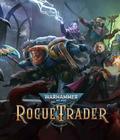
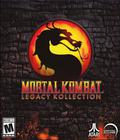


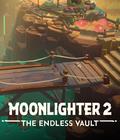


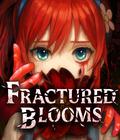

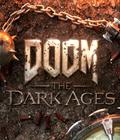 DOOM: The Dark Ages is a single-player action FPS that tells the epic cinematic origin story of the DOOM Slayer's rage.
DOOM: The Dark Ages is a single-player action FPS that tells the epic cinematic origin story of the DOOM Slayer's rage.





















